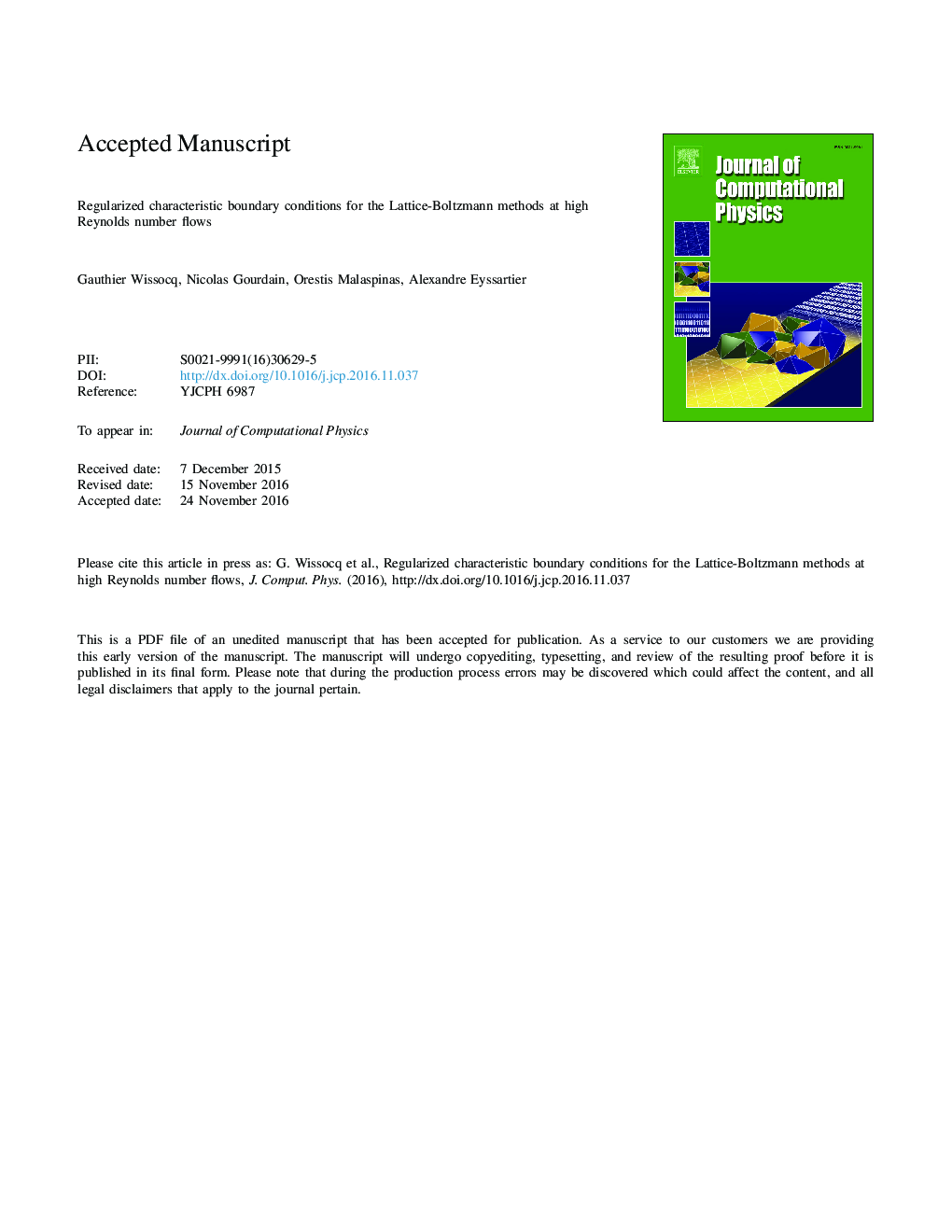| Article ID | Journal | Published Year | Pages | File Type |
|---|---|---|---|---|
| 4967633 | Journal of Computational Physics | 2017 | 17 Pages |
Abstract
This paper reports the investigations done to adapt the Characteristic Boundary Conditions (CBC) to the Lattice-Boltzmann formalism for high Reynolds number applications. Three CBC formalisms are implemented and tested in an open source LBM code: the baseline local one-dimension inviscid (BL-LODI) approach, its extension including the effects of the transverse terms (CBC-2D) and a local streamline approach in which the problem is reformulated in the incident wave framework (LS-LODI). Then all implementations of the CBC methods are tested for a variety of test cases, ranging from canonical problems (such as 2D plane and spherical waves and 2D vortices) to a 2D NACA profile at high Reynolds number (Re=105), representative of aeronautic applications. The LS-LODI approach provides the best results for pure acoustics waves (plane and spherical waves). However, it is not well suited to the outflow of a convected vortex for which the CBC-2D associated with a relaxation on density and transverse waves provides the best results. As regards numerical stability, a regularized adaptation is necessary to simulate high Reynolds number flows. The so-called regularized FD (Finite Difference) adaptation, a modified regularized approach where the off-equilibrium part of the stress tensor is computed thanks to a finite difference scheme, is the only tested adaptation that can handle the high Reynolds computation.
Related Topics
Physical Sciences and Engineering
Computer Science
Computer Science Applications
Authors
Gauthier Wissocq, Nicolas Gourdain, Orestis Malaspinas, Alexandre Eyssartier,
